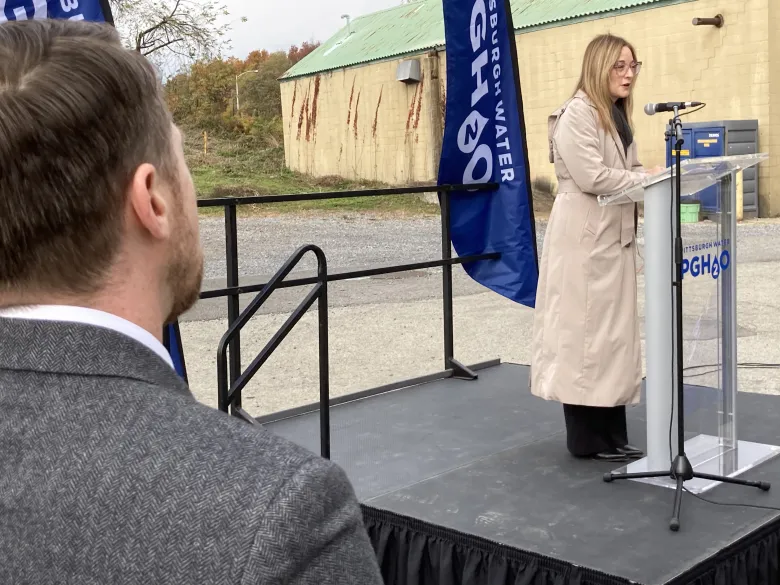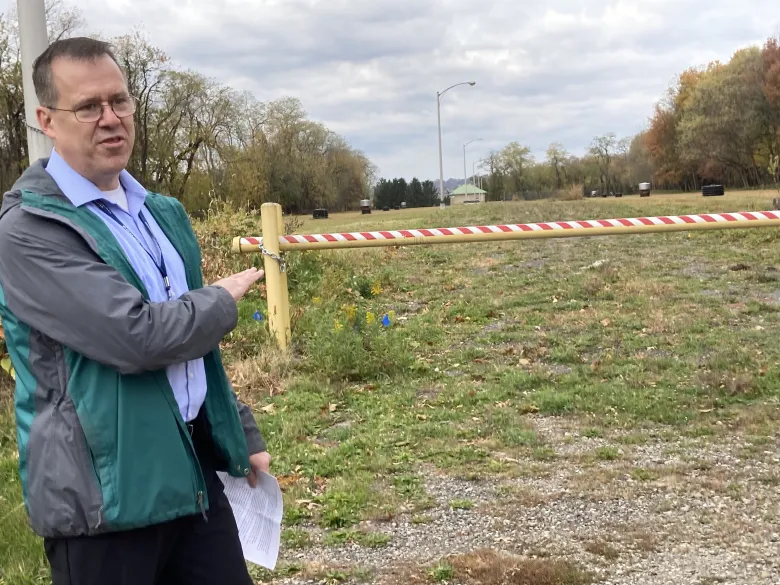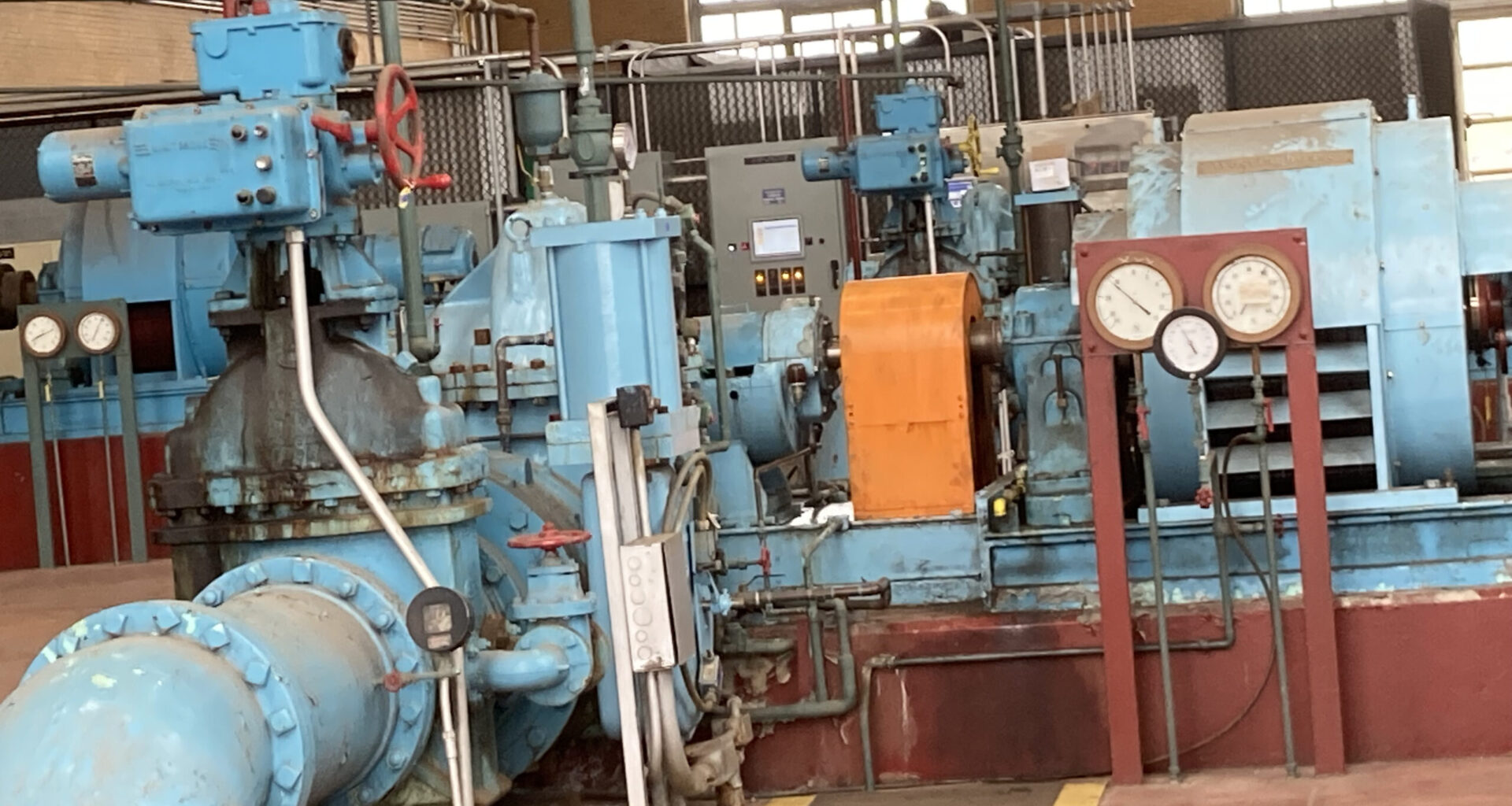For more than 110 years, the 75-acre village along the Allegheny River near Aspinwall that provides the water purification system for Pittsburgh Water has served the city well, moving as much as 76 million gallons of water a day to customers across the city and a few suburbs.
But now, it’s time for major changes to upgrade the system and create redundancy so that a major problem can’t shut down the entire system at one time. The agency began a $470 million system upgrade three years ago and Friday held a news conference to announce the start of the most extensive work so far: three projects that will cost a total of $193 million over the next three years to upgrade two pumping stations and install a massive new supply line from the main plant to the Lanpher reservoir in Shaler.
This is all preliminary work for the signature task of the upgrade, replacing the 44 million-gallon underground storage tank at the main plant known as the clearwell, which currently is the only place where the system can chlorinate water to make it safe for drinking. That facility is one huge tank now, but it will be redesigned with six separate chambers so the system can continue to function if a couple of the chambers have to be shut down for maintenance from time to time.
“It has served us well, and it is time to be replaced,” Rachael Beam, the agency’s chief engineering officer, said at the news conference. “These are all multi-generational projects.”
 Will Pickering, CEO of Pittsburgh Water, listens as Rachael Beam, the agency’s chief engineering officer, describes $193 million in water plant improvements at a news conference Friday at the plant along the Allegheny River near Aspinwall. (Ed Blazina/Pittsburgh Union Progress)
Will Pickering, CEO of Pittsburgh Water, listens as Rachael Beam, the agency’s chief engineering officer, describes $193 million in water plant improvements at a news conference Friday at the plant along the Allegheny River near Aspinwall. (Ed Blazina/Pittsburgh Union Progress)
That’s the key, CEO Will Pickering said, refurbishing the system so it lasts many more decades.
“We’re focused on the next generation,” Pickering said. “This is really a monumental moment, not only for Pittsburgh Water but for our entire region.”
Planning for the massive project began in 2018 with an order from the state Department of Environmental Protection to replace the clearwell because it has no backup. Because of the overall age of the system, the agency seized the opportunity to develop a complete Water Reliability Plan to upgrade the entire system.
In addition to the state-mandated work, the project includes improvements at two reservoirs, replacing two pumping stations, and refurbishing huge water lines to fill the reservoirs. The entire project is scheduled to be completed by 2034.
For the clearwell, the easiest thing would have been to expand the capacity of the facility, but that isn’t possible because the 6.15-acre site is sandwiched between the river and railroad tracks with an Aspinwall park on one end and the rest of the water facility on the other.
So before that can be taken out of service, the agency was forced to develop another temporary method of chlorinating water. It decided to use the Highland Park 2 reservoir above the Pittsburgh Zoo & PPG Aquarium, which serves about 80% of customers, and Lanpher, which serves the other 20%.
 Barry King, Pittsburgh Water’s director of engineering and construction, describes the 44 million-gallon clearwell water storage facility for chlorinating water that is buried under this field along the Allegheny River and how the agency is taking steps to replace it. (Ed Blazina/Pittsburgh Union Progress)
Barry King, Pittsburgh Water’s director of engineering and construction, describes the 44 million-gallon clearwell water storage facility for chlorinating water that is buried under this field along the Allegheny River and how the agency is taking steps to replace it. (Ed Blazina/Pittsburgh Union Progress)
But using those facilities involved major changes, including bypassing the clearwell, sealing the surface of Highland 2, and installing an additional water supply line to Lanpher, about 5 miles from the main plant. The reservoir improvements and other aspects have been completed, so now comes the projects known as ABC:
A refers to the $54 million improvement project at the Aspinwall pump station at the main plant, where four pumps will be replaced on one side of the building, and the other side will be remodeled into two floors of office space.
The ornate building was built with ceilings 40 feet high to accommodate the original pumps, but those were replaced decades ago with pumps that are about 10 feet high, and the new ones likely will be a little smaller. The new pumps include one that can push 28 million gallons of water a day, another that can push 26 million and a pair at 12 million each.
The building itself, which has carved cornices at the entrance and marble halfwalls, recently was included on the National Register of Historic Places. That means the windows and other items changed over the years will have to be restored to their original design as part of this project.
B is for the replacement of the Bruecken pump station across the Allegheny from the main plant under the Highland Park Bridge. That $107 million project will be built next to the old station. A new 48-inch line already has been added to increase the amount of water the station can push up to the two reservoirs at Highland Park.
C is for the clearwell bypass, the $29 million waterline that will carry water from the Aspinwall pump station around the clearwell and down the Allegheny to Lanpher. The massive water main starts at 12 feet in diameter and eventually tapers to 7 feet.
At about 5 miles, the distance between the pump station and the reservoir is far enough that chlorination can be added when water leaves Aspinwall, and it will be pure and ready for distribution when it arrives at Lanpher.
Those three projects are expected to be completed by 2029, when work to replace the clearwell is expected to start. The replacement is expected to cost about $65.8 million.
Pittsburgh Mayor Ed Gainey acknowledged the high cost of upgrading the system, covered mostly with low-interest loans and rate hikes. But the mayor said it’s needed “if we want clean drinking water for our babies and our elders. We all know how old the system is.”
Ed covers transportation at the Pittsburgh Post-Gazette, but he’s currently on strike. Email him at eblazina@unionprogress.com.



